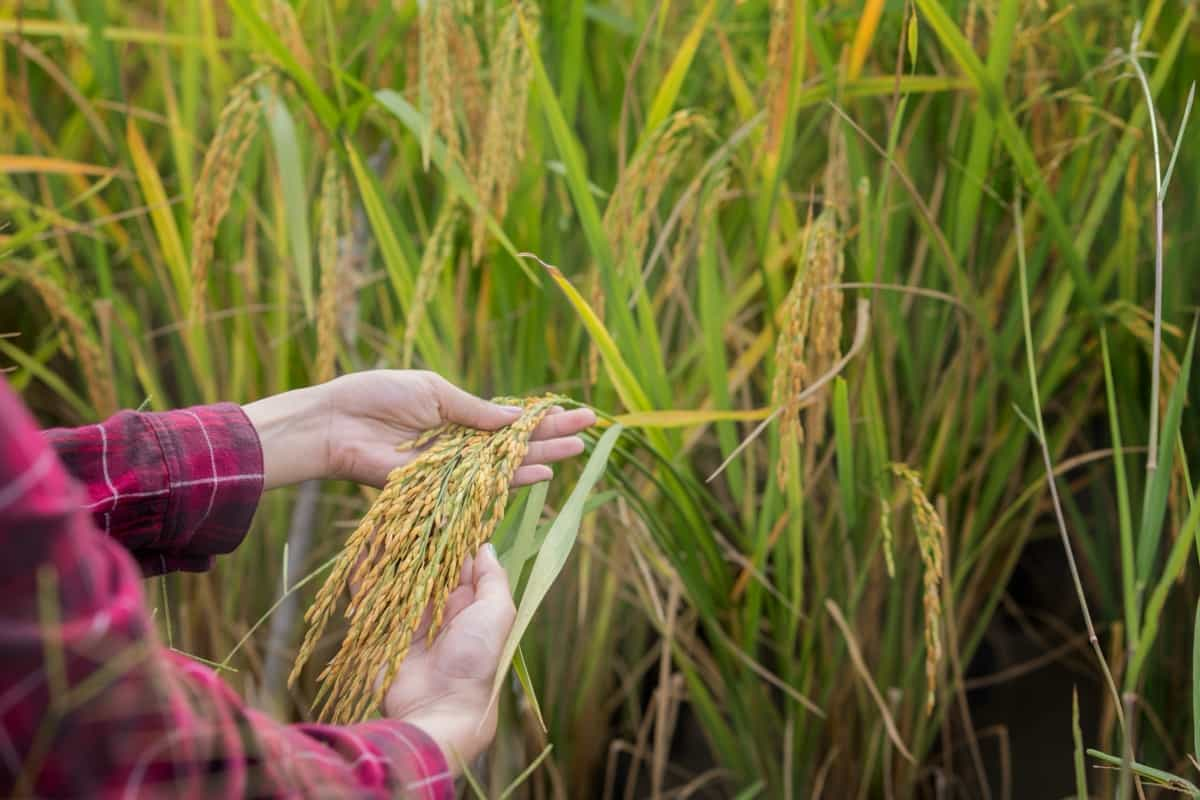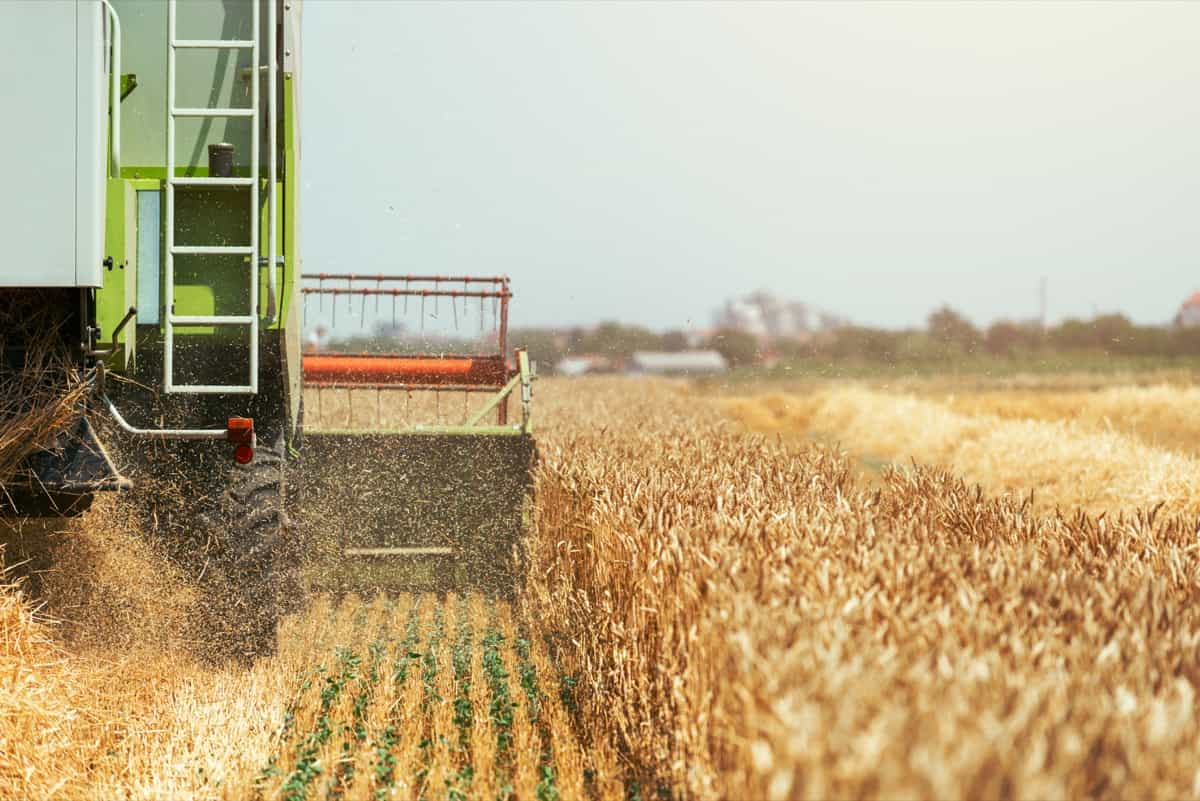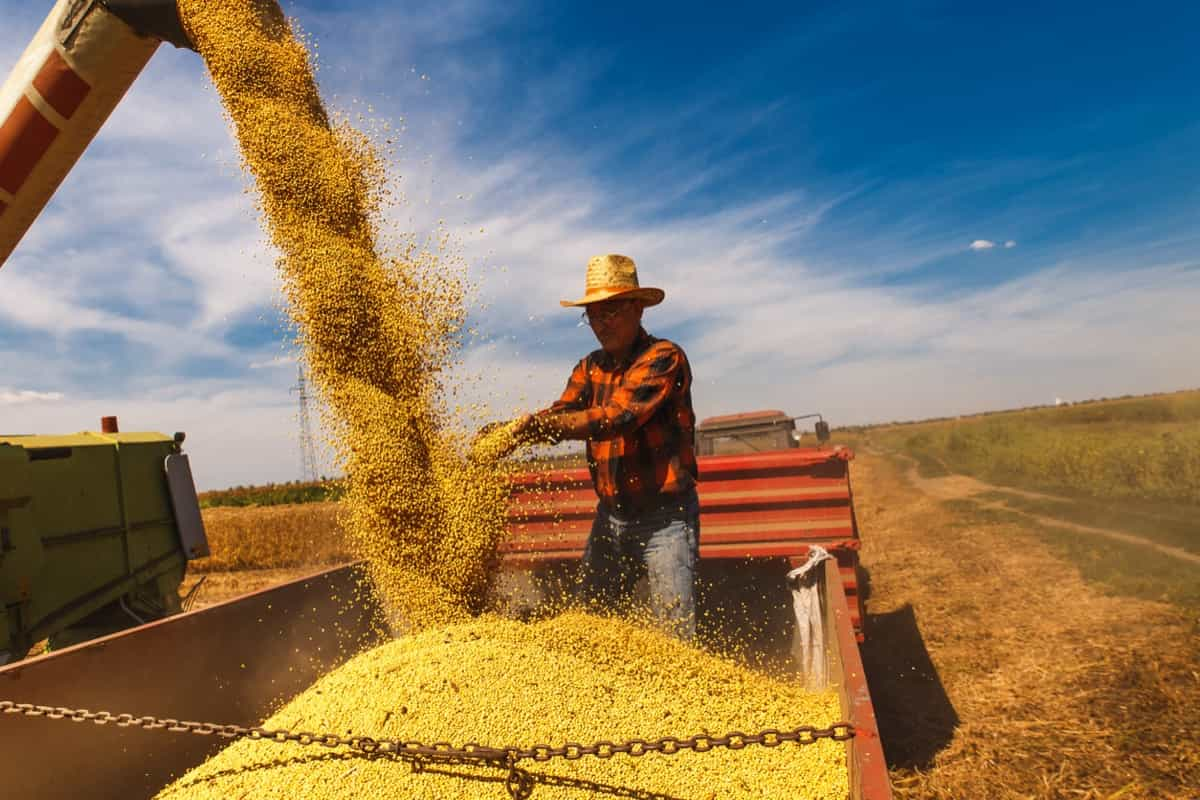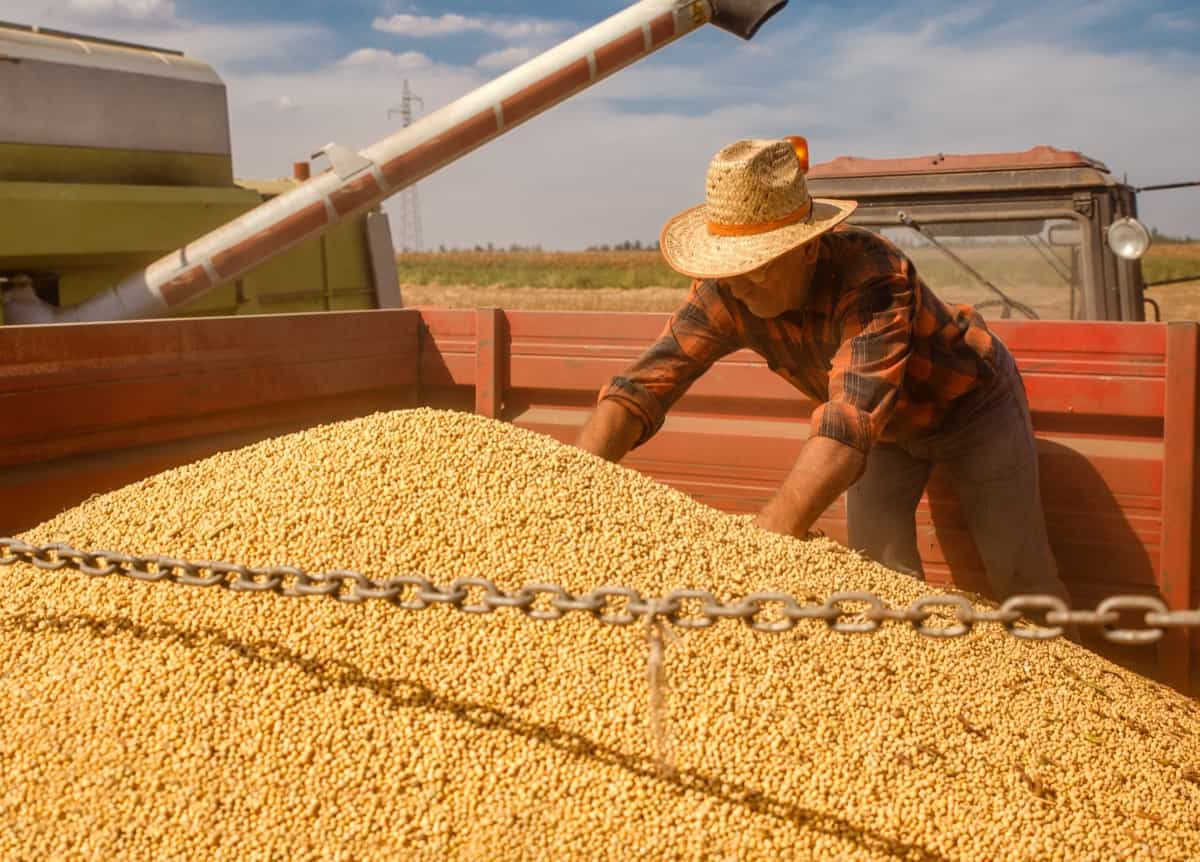In India, a land of diverse agricultural practices, crop yields per acre vary significantly across states. This variation reflects the influence of climate, soil type, irrigation facilities, and farming techniques. Our exploration delves into the state-wise yields of major crops like wheat, rice, maize, banana, and potato for the year 2022-23.

The data reveals intriguing patterns: Punjab and Haryana lead in cereal production, while West Bengal and Odisha excel in rice. This blog post aims to provide a detailed analysis of these variations, offering insights into India’s agricultural landscape.
What is Crop Yield Per Acre in India?
Crop yield per acre is a measure of how much of a crop is produced on a given area of land. It is usually expressed in kilograms or tons per hectare or acre. Numerous elements, such as soil quality, water availability, climate, pests, diseases, crop management techniques, and seed varieties, have an impact on crop yield per acre.
Crop yield per acre is an important indicator of agricultural productivity, food security in India, where half of the population mostly depends on agriculture for their livelihood. Ministry of Agriculture and Farmers Welfare, Average crop yield per acre in India for major crops in 2019-20 was as follows.
| Crop | Yield per Acre (kg) |
| Rice | 1,620 |
| Wheat | 1,430 |
| Maize | 1,890 |
| Sugarcane | 66,000 |
| Cotton | 500 |
| Soybean | 750 |
| Rapeseed | 800 |
| Groundnut | 900 |
| Potato | 10,000 |
| Onion | 8,000 |
Factors Affecting Crop Yield in India
Soil quality is a crucial factor in crop growth and nutrient supply. It can be improved through organic manures, composts, biofertilizers, green manures, crop rotation, and conservation tillage. Water availability is also a key factor affecting crop growth and development. Efficient irrigation methods, such as drip, sprinkler, or micro-irrigation, can enhance water availability. Climate, which refers to long-term patterns of temperature, precipitation, humidity, wind, and sunshine, can be modified through climate-resilient crops, crop diversification, intercropping, agroforestry, and protected cultivation.
In case you missed it: Seed Rate Per Acre in India: Exploring Seeds Per Acre for Different Crops

Pests and diseases, including insects, mites, nematodes, fungi, bacteria, viruses, and weeds, can be controlled using integrated pest management practices. Crop management practices, including land preparation, seed selection, sowing, fertilization, weed control, harvesting, and post-harvest handling, can be improved through good agricultural practices (GAP) like precision farming, digital agriculture, and farm mechanization.
Historical Trends in Crop Yield Per Acre
Crop yield per acre is a crucial indicator of a country’s agricultural efficiency and productivity, influenced by factors like soil quality, water availability, climate, pest and disease management, crop variety, fertilizer use, irrigation, and farming practices. In India, the average yield per hectare of foodgrains increased from 1,876 kg in 2015-16 to 2,156 kg in 2019-20, a 14.9% growth.
The average yield per hectare of oilseeds also increased from 1,080 kg to 1,199 kg, an 11% growth. The average yield per hectare of sugarcane increased from 70.5 tonnes to 72.8 tonnes, a 3.3% growth, and the average yield per hectare of cotton increased from 486 kg to 495 kg, a 1.9% growth. However, these figures are still lower than the global average and the potential yields that can be achieved with improved technologies and practices.
Crop-Specific Yield Analysis in India
Crop-specific yield analysis in India is a method used to estimate the potential and actual yield of different crops grown in different regions. Factors such as soil quality, fertilizer use, pest control, weather conditions, and irrigation affect crop yield. Predicting crop yield requires reliable and efficient statistical models. Dharmaraja et al. used linear regression and time-series models to predict the yield of Bajra (pearl millet) in Alwar district of Rajasthan, using data from 1980 to 2014.
Singh et al. proposed a yield prediction model for 36 crops grown in 542 districts of India using regression algorithms from 1997 to 2016. This analysis can help farmers, policymakers, and researchers make informed decisions regarding crop production, marketing, storage, trade, and assess the impact of climate change on crop yield and food security.
Government Initiatives for Improving Crop Yield
India’s government has implemented various schemes and programs to boost crop yield and agricultural productivity. Pradhan Mantri Fasal Bima Yojana (PMFBY), an insurance scheme that provides financial support to farmers in crop failure by natural calamities, pests, and diseases. The Pradhan Mantri Krishi Sinchayee Yojana (PMKSY) aims to improve water use efficiency by providing water to every field.
In case you missed it: Fertilizer Application Rate Per Acre: Exploring Different Crop Fertilizer Application Rates

The Soil Health Card Scheme (SHC) provides farmers with soil health cards with information on nutrient status and fertilizer recommendations. The National Food Security Mission provide to increase rice, wheat, pulses, and coarse cereal production through area expansion and improved agronomic practices. The National Mission for Sustainable Agriculture promotes sustainable agriculture practices like organic farming, rainfed agriculture, integrated farming systems, and climate-resilient agriculture.
Challenges Faced in Achieving High Crop Yields
Despite government and stakeholder initiatives, farmers in India need help in achieving high crop yields. These include small and fragmented land holdings, low input use of inputs like seeds, fertilizers, pesticides, and machinery, poor soil health due to overexploitation, erosion, salinization, acidification, and nutrient depletion, severe water scarcity and stress due to increasing demand, declining supply, and inefficient management, climate change and variability, and lack of market access and infrastructure.
Small and fragmented land holdings limit the scope for mechanization, irrigation, and adoption of improved technologies. Low input use affects crop growth and yield potential. Poor soil health, water scarcity, climate change, and lack of market access and infrastructure hinder post-harvest management and value addition of crops, leading to high losses, low prices, and low income for farmers. Addressing these challenges is ensuring sustainable agricultural practices and promoting sustainable growth.
Impact of Climate Change on Crop Yields
Climate change poses threat to agriculture in the 21st century, with significant impacts on crop yields in India. Factors such as temperature rise, rainfall variability, carbon dioxide concentration, and rising sea levels can affect crop phenology, physiology, biochemistry, and growth stages. Temperature rise can reduce growth duration, increase evapotranspiration, alter photosynthesis and respiration processes, and affect pollen viability and grain filling. Rainfall variability can also cause droughts or floods, damaging crops and reducing yield potential.
Carbon dioxide concentration can enhance photosynthesis and water use efficiency but reduce nitrogen fixation and protein content. The rise in sea level can affect coastal agriculture by causing salinity intrusion, erosion, inundation, and submergence of land, as well as affecting freshwater resources for irrigation. A study by the Indian Agricultural Research Institute predicts that climate change could reduce rice yield by 4-6%, wheat by 6-23%, maize by 18-23%, and sorghum by 2-14% by 2050 in India.
Comparison of Crop Yields Across Different States in India
| Crop | Punjab | Haryana | Maharashtra | Madhya Pradesh | Karnataka | Kerala | Uttar Pradesh | Bihar | West Bengal | Odisha |
| Wheat | 4,500 | 4,200 | 2,800 | 3,000 | 2,500 | 2,000 | 3,200 | 2,700 | 2,600 | 2,400 |
| Rice | 6,000 | 5,500 | 3,500 | 4,000 | 3,800 | 4,500 | 5,000 | 4,800 | 5,200 | 4,700 |
| Maize | 5,000 | 4,800 | 3,000 | 3,500 | 3,200 | 2,800 | 3,800 | 3,400 | 3,300 | 3,100 |
| Banana | 25,000 | 22,000 | 18,000 | 20,000 | 19,000 | 23,000 | 21,000 | 19,500 | 20,500 | 18,500 |
| Potato | 15,000 | 14,000 | 12,000 | 13,000 | 11,500 | 13,500 | 14,500 | 13,500 | 14,500 | 12,500 |
In case you missed it: Cost of Farming Per Acre in India: Calculator for State-wise Cultivation Input Cost Per Acre

Innovative Farming Techniques for Increasing Crop Yields
Innovative farming techniques, like precision agriculture, vertical farming, biofortification, and genetic engineering, can increase crop yields by optimizing crop growth, soil health, water use, pest and disease management, and reducing crop losses. Precision agriculture uses sensors, drones, satellites, and artificial intelligence to monitor and optimize crop growth, while vertical farming uses hydroponics or aeroponics systems to deliver nutrients and water to plants.
Biofortification breeds crops to enhance their nutritional value, improving human health and reducing malnutrition. Genetic engineering modifies crop genes to improve traits like drought resistance, pest resistance, yield, quality, and shelf life, reducing crop losses and increasing food security.
Role of Technology in Enhancing Crop Yields
Technology significantly enhances crop yields by providing farmers with accurate information about weather forecasts, market prices, and government schemes through mobile apps, SMS services, and radio programs. It also allows access to quality seeds, fertilizers, pesticides, and machinery through online platforms and digital payments.
It also improves irrigation efficiency and water management through drip and sprinkler systems, facilitates post-harvest management through cold storage and food preservation techniques, and promotes knowledge sharing among farmers through online courses and social media groups.
Economic Implications of Varied Crop Yields
- Higher crop yields can increase farm incomes, reduce poverty, improve the livelihoods of millions of farmers in India.
- Higher crop yields can also lower food prices, increase food availability, and enhance food security for millions of consumers in India.
- Higher crop yields can boost agricultural growth, contribute to GDP, and generate employment opportunities in rural and urban areas.
- Lower crop yields can reduce farm incomes, increase indebtedness, and worsen distress among farmers in India.
- Lower crop yields can also raise food prices, reduce food availability, and worsen food insecurity among consumers in India.
- Lower crop yields can hamper agricultural growth, affect GDP, and create unemployment problems in rural and urban areas.
In case you missed it: Cost of Cultivation of Potato Per Acre in India: Exploring from Seed Costs to Market Charges

Sustainable Practices for Maximizing Crop Yields
- Adopting organic farming methods that use natural inputs such as compost, vermicompost, biofertilizers, and biopesticides to enhance soil fertility and crop health.
- Practicing integrated pest management (IPM) that combines biological, cultural, mechanical, and chemical methods to control pests and diseases without harming beneficial organisms and biodiversity.
- Implementing climate-smart agriculture (CSA) that adapts to the changing climate conditions by using drought-tolerant, heat-tolerant, and flood-tolerant crop varieties, conserving soil and water resources, and reducing greenhouse gas emissions.
- Diversifying cropping systems by growing different crops in rotation or intercropping to reduce pest and disease incidence, improve soil health, and increase income stability.
- Enhancing crop resilience by using crop insurance schemes, weather-based advisories, and early warning systems to cope with weather uncertainties and natural disasters.
Future Projections for Crop Yields in India
- Rice: The projected yield for 2050 is 3.8 tonnes per hectare (t/ha), which is 52% higher than the current yield of 2.5 t/ha. The projected yield gap (the difference between potential and actual yield) is 1.6 t/ha, which is 30% of the potential yield of 5.4 t/ha.
- Wheat: The projected yield for 2050 is 4.1 t/ha, which is 37% higher than the current yield of 3 t/ha. The projected yield gap is 1.7 t/ha, which is 29% of the potential yield of 5.8 t/ha.
- Maize: The projected yield for 2050 is 4.3 t/ha, which is 54% higher than the current yield of 2.8 t/ha. The projected yield gap is 2.1 t/ha, which is 33% of the potential yield of 6.4 t/ha.
- Climate change: The projected increase in temperature and rainfall variability can affect crop growth, development, and quality, as well as increase pest and disease pressure.
- Technology adoption: The adoption of improved seeds, fertilizers, pesticides, irrigation, machinery, and digital tools can enhance crop productivity, efficiency, and profitability.
- Policy support: The provision of subsidies, incentives, credit, insurance, extension, and market linkages can facilitate farm input access, output marketing, risk management, and income generation.
In case you missed it: High-Density Kiwi Plantation: Spacing, Plants Per Acre, Techniques, Cost, and Yield

Conclusion
Examining state-wise crop yields in India reveals significant variations, with factors such as climate, soil quality, and agricultural practices playing pivotal roles. Understanding these disparities is crucial for policymakers and farmers to enhance agricultural productivity, food security across the nation.
- Types of Pesticides Used in Agriculture: A Beginner’s Guide
- Economical Aquaculture: A Guide to Low-Budget Fish Farming
- 15 Common Planting Errors That Can Doom Your Fruit Trees
- How to Make Houseplants Bushy: Effective Tips and Ideas
- Innovative Strategies for Boosting Coconut Pollination and Yield
- Pollination Strategies for Maximum Pumpkin Yield
- The Complete Guide to Chicken Fattening: Strategies for Maximum Growth
- Natural Solutions for Tulip Problems: 100% Effective Remedies for Leaf and Bulb-Related Issues
- Revolutionizing Citrus Preservation: Towards a Healthier, Greener Future
- Natural Solutions for Peony Leaf and Flower Problems: 100% Effective Remedies
- Maximizing Profits with Avocado Contract Farming in India: A Comprehensive Guide
- Natural Solutions for Hydrangea Problems: 100% Effective Remedies for Leaf and Flowers
- The Ultimate Guide to Choosing the Perfect Foliage Friend: Bringing Life Indoors
- From Sunlight to Sustainability: 15 Ways to Use Solar Technology in Agriculture
- The Ultimate Guide to Dong Tao Chicken: Exploring from History to Raising
- The Eco-Friendly Makeover: How to Convert Your Unused Swimming Pool into a Fish Pond
- Mastering the Art of Delaware Chicken Farming: Essentials for Healthy Backyard Flocks
- 20 Best Homemade Fertilizers for Money Plant: DIY Recipes and Application Methods
- How to Craft a Comprehensive Free-Range Chicken Farming Business Plan
- Brighten Your Flock: Raising Easter Egger Chickens for Beauty and Bounty
- How to Optimize Your Poultry Egg Farm Business Plan with These Strategies
- Subsidy for Spirulina Cultivation: How Indian Government Schemes Encouraging Spirulina Farmers
- Ultimate Guide to Raising Dominique Chickens: Breeding, Feeding, Egg-Production, and Care
- Mastering the Art of Raising Jersey Giant Chickens: Care, Feeding, and More
- Ultimate Guide to Raising Legbar Chickens: Breeding, Farming Practices, Diet, Egg-Production
- How to Raise Welsummer Chickens: A Comprehensive Guide for Beginners
- How to Protect Indoor Plants in Winter: A Comprehensive Guide
- Ultimate Guide to Grow Bag Gardening: Tips, Tricks, and Planting Ideas for Urban Gardeners
- Guide to Lotus Cultivation: How to Propagate, Plant, Grow, Care, Cost, and Profit
- Agriculture Drone Subsidy Scheme: Government Kisan Subsidy, License, and How to Apply Online
- Ultimate Guide to Raising Araucana Chickens: Breed Profile, Farming Economics, Diet, and Care
- Bringing Hydroponics to Classroom: Importance, Benefits of Learning for School Students
- Ultimate Guide to Raising Polish Chickens: Breed Profile, Farming Economics, Diet, and Care
- Ultimate Guide to Raising Australorp Chickens: Profile, Farming Economics, Egg Production, Diet, and Care
- Silkie Chicken Farming: Raising Practices, Varieties, Egg Production, Diet, and Care
- Sussex Chicken Farming: Raising Practices, Varieties, Egg Production, Diet and Care